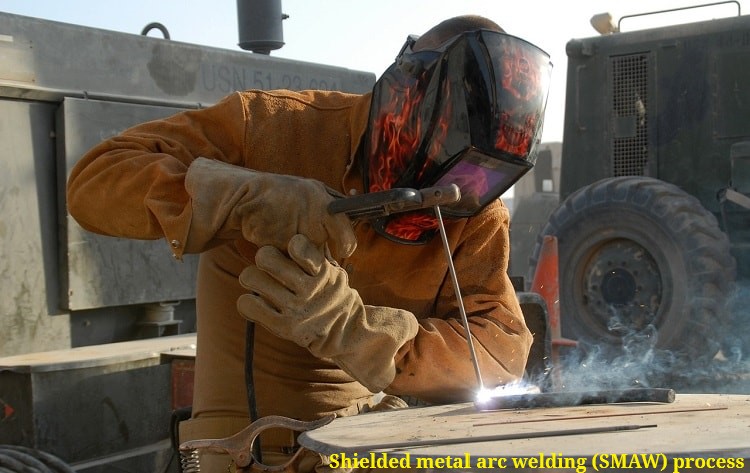Welding machines welding (weldingwelder.blogspot.com)
There are various types of welding machines available to accommodate the wide range
of welding processes and applications that comprise ‘welding’.
Welding machines range from small ‘hobby type’ machines putting out as little as 100
amps to large industrial types with outputs in the thousands of amps.
To ensure the safety of the welding operator, the open circuit voltage (OCV) of welding
machines is restricted by regulations to:
AC – maximum OCV 80 volts
DC – maximum OCV 110 volts.
AC machines
When an AC mains supply is available, it is possible to use a step-down transformer to
reduce the supply voltage of 415 V to a safe OCV of around 70–80 volts. At the same
time current is increased so as to provide sufficient heat for welding
The step-down welding transformer consists of a laminated, soft iron core carrying two
coils which are not electrically connected. The first is connected to the supply (primary).
Voltage applied across the first coil will produce, by induction, a voltage in the second
coil. The value of this secondary (induced) voltage will be proportional to the ratio
between the turns in the two coils. If each coil has an equal number of turns, equal
voltage will appear at the secondary connections. If, however, a transformer has 400
turns in the primary coil, and 50 turns in the secondary coil, then a primary voltage of
400 V will induce 50 V to appear at the secondary connections.
welding (weldingwelder.blogspot.com)The power into the welding machine is calculated by multiplying the volts by the amps
and is expressed as volt-amps (VA). This figure is generally quite large and is usually
divided by 1000 and expressed as kilovolt amperes (kVA).
Power IN = volts x amps
400 V x 50 A = 20 000 VA
Since transformers have very low losses, we can consider here that the total power
put into the machine must equal the power output. Therefore, in this machine which is
theoretically 100% efficient:
Power OUT = 20 000 VA
The output voltage is determined by the ratio of the windings of the transformer.
Therefore in this case the output voltage will be equal to 50 volts.
If power = amps x volts, it can be seen that:
amps = power
volts
Therefore, in our welding machine the output current is equal to:
20 000 = 400 amps
50
The output current of 400 amps at 50 volts would now be suitable for welding,
particularly if some form of current control were added.
We considered a transformer that was theoretically 100% efficient, however in practice
this would not be the case. Let us say that our transformer was only 90% efficient. This
means that we would have a power loss of 10 per cent.
Since the voltage is determined by the ratio of the windings of the machine and is
therefore fixed, the power loss would be in the form of reduced output amperage.
Therefore our output amperage would be:
400 A x 90% = 360 AMPS

